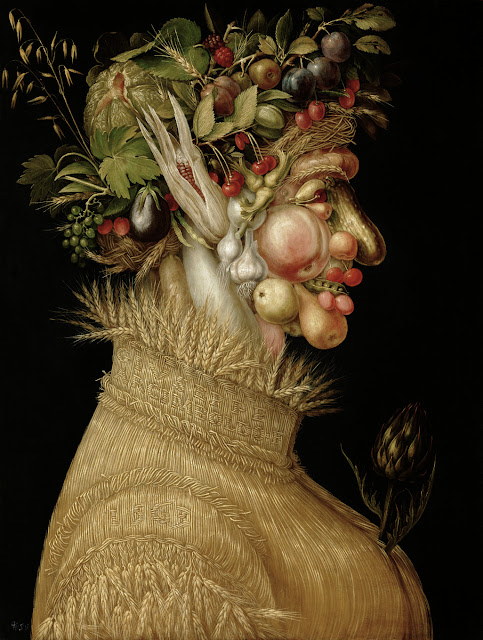 Have you ever been impatient to eat a banana and selected a fruit that you knew wasn't quite ripe yet? And then, when you peel it and bite into it, you discover what you knew would happen all along: the flavour lacks sweetness and is chalky and disappointing.
Have you ever been impatient to eat a banana and selected a fruit that you knew wasn't quite ripe yet? And then, when you peel it and bite into it, you discover what you knew would happen all along: the flavour lacks sweetness and is chalky and disappointing.Well, there was a time when that would not have happened. Up until the mid 20th Century the variety of banana consumed all over the world was called Gros Michel, and these little rascals were as delicious when eaten green as they were ripe.

Unfortunately Gros Michel (which I'll loosely translate as Fat Michael or Big Mike) was wiped out, completely in commercial terms, by a plague of fungus (Fusarium oxysporum commonly known as Panama disease — a relative of Dutch Elm disease).
So the second best variety stepped up and came into commercial use. This is called the AAA Cavendish and it is the variety that you (and I) are eating today,
 The "AAA" isn't a designation of quality. Rather it refers to the fact that the Cavendish is a hybrid with three sets of chromosomes (instead of the usual two). It is called a triploid. The A stands for "acuminata" because all three of the Cavendish's ancestors come from the Musa acuminata subspecies.
The "AAA" isn't a designation of quality. Rather it refers to the fact that the Cavendish is a hybrid with three sets of chromosomes (instead of the usual two). It is called a triploid. The A stands for "acuminata" because all three of the Cavendish's ancestors come from the Musa acuminata subspecies. The other subspecies of the banana family is Musa balbisiana and cross pollination with M. acuminata has led to the AAB triploids which represent the Pacific plantains.
Enough science. Now for the dramatic bit.
 Just as Gros Michel was wiped out by a fungus, Cavendish is now under threat, by a villain called black Sigatoka. (If ever there was a villainous name, that's one.)
Just as Gros Michel was wiped out by a fungus, Cavendish is now under threat, by a villain called black Sigatoka. (If ever there was a villainous name, that's one.)Experiments are under way to make Cavendish resistant to the fungus, either by genetic engineering or through breeding in resistance by recreating it from its wild ancestors.
Neither line of research is showing much success.
So keep your fingers crossed, or we may not have any bananas, even inferior Cavendish bananas to eat, green or ripe.
However it's worth noting that the superior tasting Gros Michel variety still exists. It's a rarity, but it's out there...
Maybe it's time for Big Mike to make a comeback.

(Most of the information for this post derives from an excellent article in the 20 April 2013 New Scientist 'Go Bananas' by Bob Holmes.)
(Image credits: the green and yellow bananas are from Boing Boing. The heaped bananas are from Wikipedia. The stages of ripening bananas 1-7 are from Carla Golden Wellness. The close up of a pile of bananas is from Scientific American. All these sites provide some interesting reading on the subject. The Velvet Underground cover is from Trending Trademarks, which has some interesting reading on a copyright dispute between the Velvets and the Warhol estate.)


While in Brazil back in the 70's, I was served bananas that were segmented. I never knew that they could be divided into natural segments like oranges.
ReplyDeleteShame to hear they're endangered.